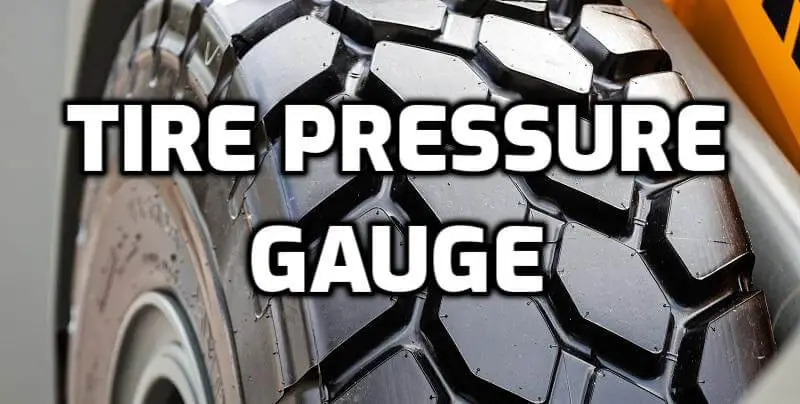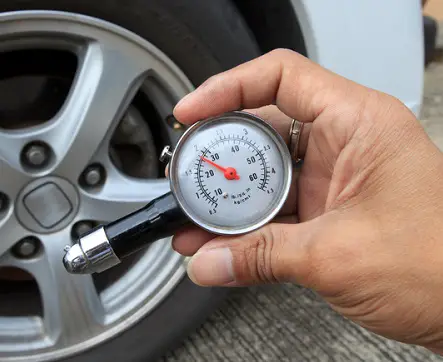Tire Pressure Gauge

Ensuring that your tires are properly inflated is crucial for your vehicle’s safety and efficiency. Underinflated or overinflated tires can lead to uneven wear, reduced fuel efficiency, and an increased risk of accidents. One of the essential tools to maintain the correct tire pressure is a tire pressure gauge.
Top Tire Pressure Gauge
Tire pressure gauges are relatively inexpensive and can save you money in the long run by helping you avoid costly repairs. A good tire pressure gauge should be easy to read, and it should give you an accurate reading.
Some of the best tire pressure gauges on the market include the following:
- Accutire MS-4021B Digital Tire Pressure Gauge
- TEKTON 5941 Digital Tire Gauge
- JACO ElitePro Digital Tire Pressure Gauge
How to Use a Tire Pressure Gauge
Here are the steps to use a tire pressure gauge:
Preparation
Before using a tire pressure gauge, ensure your tires are “cold” (i.e., haven’t been driven for at least three hours) to get the most accurate reading. Check your owner’s manual or the placard on the driver’s door jamb for the recommended tire pressure levels.
Inserting the gauge into the valve stem
Remove the valve cap from the tire and place the gauge’s head onto the stem. Press firmly to create a seal between the gauge and the valve stem, ensuring no air escapes.
Reading the pressure
The needle or rod will indicate the tire pressure on the gauge’s scale for analog and pencil gauges. For digital gauges, the pressure reading will appear on the LCD screen.
Removing the gauge and checking the reading
Quickly remove the gauge from the valve stem to prevent any air loss. Double-check the pressure reading on the gauge.
Adjusting the pressure if necessary
If the tire pressure is too high or too low, adjust it using an air compressor or a gas station air pump. Recheck the pressure with your gauge after adjusting to confirm the correct pressure has been achieved.
How Does A Tire Pressure Gauge Work?
A tire pressure gauge is a simple tool that measures the amount of air pressure in your tires. Most gauges have a small dial or digital display that shows the pressure. To use a tire pressure gauge, you simply remove the cap from your tire’s valve stem and place the gauge on the stem.
The gauge will show you the current pressure in your tire. It’s essential to check your tires regularly, as even a slight pressure loss can cause decreased fuel efficiency and wear and tear.
How Often Should You Check Your Tire Pressure?
You should check your tire pressure at least once a month. You may need to check it more often if you live in a hot climate or frequently drive on rough roads. Suppose you’re unsure what the proper pressure for your tires should be. In that case, you can usually find this information on the placard inside your car’s door.
You should also check your tire pressure if you notice that your car is handling it differently than usual. If your vehicle pulls to one side or vibrates, you may have a low tire. It’s important to note that tire pressure can change depending on the temperature. In general, cold weather will cause your tires to lose pressure, while hot weather will cause them to gain pressure.
If you’re checking your tire pressure in the winter, be sure to compensate for the colder temperature. Most gauges have a built-in temperature compensation feature. Still, if yours doesn’t, you can use this tire pressure chart to adjust your reading.
How Much Are Tire Pressure Gauges?
Tire pressure gauges are relatively inexpensive and can save you money in the long run by helping you avoid costly repairs. A good tire pressure gauge should be easy to read, and it should give you an accurate reading.
We have found that suitable consumer gauges typically cost between $5 and $15. If you’re looking for a more professional-grade gauge, you may need to spend more. Professional-grade gauges can cost anywhere from $20 to $100.
How To Reset Tire Pressure Gauge?
If your tire pressure gauge gives you inaccurate readings, it may need to reset. To do this, simply remove the battery and then replace it. This should reset the gauge and allow it to give you more accurate readings.
It’s important to check your tires regularly, as even a small pressure loss can cause decreased fuel efficiency and wear and tear. A tire pressure gauge is a simple tool that measures the amount of air pressure in your tires, and it can save you money in the long run by helping you avoid costly repairs.


